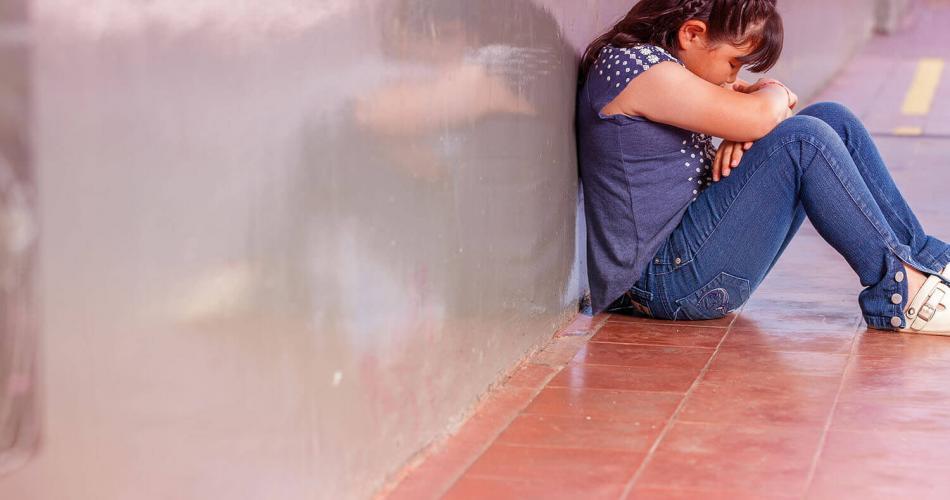Children can have their fears and worries – homework, peers, making mistakes, and being away from parents for extended times.
However, there are forms of persistent or unusual anxiety, and these can be concerning to parents. A child may refuse to leave a parent, miss school, or constantly cry. They may refuse to talk to people. They may also feel shortness of breath, clammy hands, or have an increased heart rate. These symptoms are typical of various types of anxiety disorders:
Generalized Anxiety Disorder is an anxiety disorder with persistent worrying of six months or more, even without a significant stressor. A child with a generalized anxiety disorder may constantly worry about lunchtime, getting hurt, war, safety, or illness. They may worry about the future, of losing loved ones, or the weather. Constantly worrying can decrease a child’s focus in school, interaction with their classmates, ability have fun, or sleep quality.1
Panic Disorder involves recurrent and unexpected panic attacks that do not have any known trigger. It was previously thought to occur only in adults, but current research has found that children also experience panic disorder. Girls have a higher risk of panic disorder than boys.2
Separation Anxiety Disorder is an overwhelming fear of separation from home or any figure that a child may be attached to, lasting for at least four weeks. While any child would feel anxious to leave a person or home behind, this is normal until four. Older children should be able to leave the house and their parents or guardians. Some signs of separation disorder may include attempts to avoid school by pretending to be sick.1
Social Anxiety Disorder (Social Phobia) is a fear of embarrassment in social situations, like public speaking, parties, or public restrooms. Some children may freeze when speaking in front of a class. An extreme form of social phobia is called selective mutism. Children with selective mutism can become so fearful that they would not talk, except at home or with their closest friends. 1
Specific phobias are extreme and constant anxiety or fear caused by the presence or the expectation of a particular object or situation. While a parent may generally calm a child’s fears, a persistent fear lasting for at least six months may indicate a specific phobia. Some examples are fear of animals, insects, going to the doctor, people in costumes, tunnels, needles, or vomiting.1 Agoraphobia is a specific phobia that involves a fear of being unable to escape a difficult situation and may be manifested by a fear of public transport, visiting a shopping center, or leaving the house.3
What Causes Anxiety Disorders in Children?
Genetics can play a role in anxiety, as children who have family members with anxiety have a higher chance of having anxiety. Brain chemicals (called neurotransmitters) in each person may also lead to anxiety, especially those within the amygdala, hippocampus, prefrontal cortex.4 Social and environmental factors also play a crucial role in forming anxiety in children, like scary encounters (such as with dogs)5 and anxious, overprotective, or critical parenting behaviors.6
In knowing the signs of anxiety and its possible causes, a parent or guardian can seek help for their child through a psychiatrist who may provide the appropriate therapy.
References:
Lyness DA, ed. Anxiety disorders (for parents) – nemours kidshealth. https://kidshealth.org/en/parents/anxiety-disorders.html. Published October 2018. Accessed April 30, 2021.
Birmaher B, Ollendick TH, March JS. Childhood-onset panic disorder. In: Phobic and Anxiety Disorders in Children and Adolescents, Ollendick TH, March JS (Eds), 2004.
Agoraphobia. NHS Choices. https://www.nhs.uk/mental-health/conditions/agoraphobia/overview/. Published December 18, 2018. Accessed April 30, 2021.
Casey BJ, Ruberry EJ, Libby V, Glatt CE, Hare T, Soliman F, Duhoux S, Frielingsdorf H, Tottenham N. Transitional and translational studies of risk for anxiety. Depress Anxiety. 2011 Jan;28(1):18-28. doi: 10.1002/da.20783. PMID: 21225849; PMCID: PMC3070413.
Eley TC, McAdams TA, Rijsdijk FV, Lichtenstein P, Narusyte J, Reiss D, Spotts EL, Ganiban JM, Neiderhiser JM. The Intergenerational Transmission of Anxiety: A Children-of-Twins Study. Am J Psychiatry. 2015 Jul;172(7):630-7. doi: 10.1176/appi.ajp.2015.14070818. Epub 2015 Apr 23. PMID: 25906669.
Asselmann E, Wittchen HU, Lieb R, Beesdo-Baum K. The role of the mother-child relationship for anxiety disorders and depression: results from a prospective-longitudinal study in adolescents and their mothers. Eur Child Adolesc Psychiatry. 2015 Apr;24(4):451-61. doi: 10.1007/s00787-014-0596-x. Epub 2014 Sep 9. PMID: 25201054.



